Native AZ Trees, Bushes & Cacti
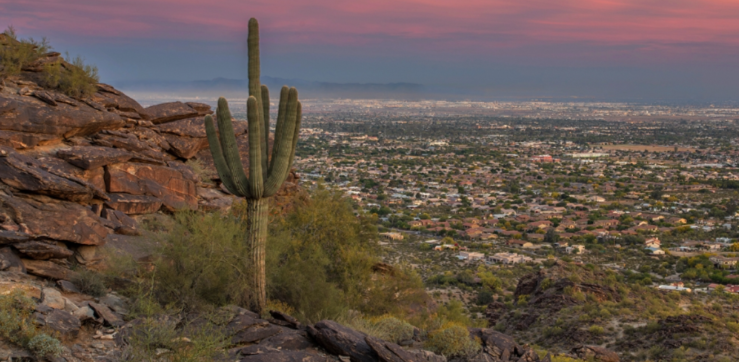
Trees, Cactus, Bushes, Flowers
Here in the Valley of the Sun, we are blessed to have a wide assortment of native trees and bushes to choose from. Whether your preference is the flower blooming type, or a large shade tree, or a more festive Cypress, there is something for everyone. Below are the more common ones with the maintenance & upkeep requirements.
Native Arizona Trees!
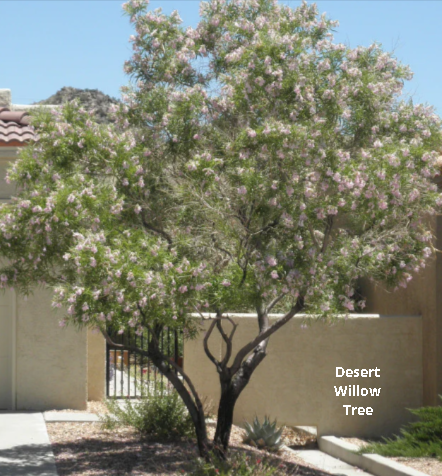
Dessert Willow - A moderate to fast grower. It forms funnel shaped flowers that bloom in spring and/or summer. The flowers turn into seed pods that attract hummingbirds, butterflies, and mammals that eat the seeds. Mature size is 2-3- feet tall. Needs partial to full sun. In the first year, water deeply every 5-7 days. After that, water every two weeks in the summer and monthly after that. If you want a single trunk, prune the low branches in the spring. Flowers and edible seed pods will drop, requiring blowing, so don't plant near a pool.
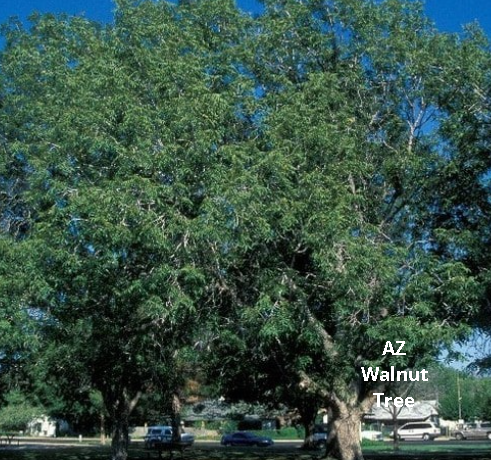
Arizona Walnut - a slow growing tree. It produces a 1 inch diameter nut that is edible. Long flowers bloom in April to May. It is a large shade tree.It grows up to 45-50 feet tall. Needs full to partial sun. Required watering is medium. Attracts birds to nest, and squirrels plus other wildlife to eat nuts. They do great with regular watering, especially in spring & summer, but they can survive in a drought. Requires very little pruning. The walnuts drop in late summer & early fall. Don't plant near a pool.
--->
Velvet Mesquite - this is a fast to moderate growing tree, depending on how well the soil drains. It can have multiple twisting trunks. The flowers bloom in late spring/early summer, which later turn to bean pods that feed the wildlife and cattle after they drop to the ground in the summer. Generally it reaches 25-30 feet tall. Loves full sun, but can do partial shade. Watering requirements are low. Water every week in the first year, but sparingly after that. Birds, butterflies and bees migrate to this tree. To raise up the canopy, prune in the summer, otherwise it becomes very shrub like. Don't plant near a pool.
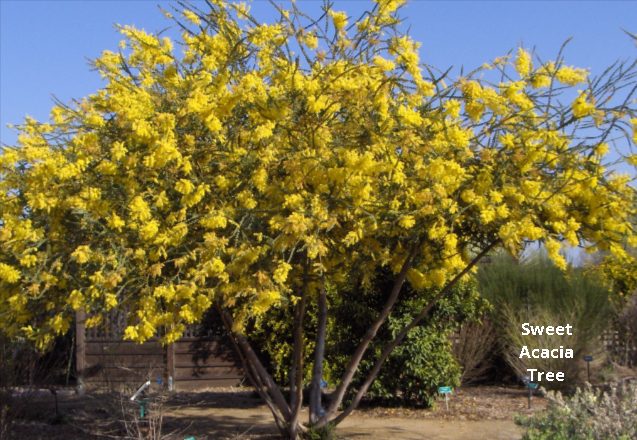
Sweet Acacia Tree - A fast grower. It forms fluffy yellow blooms at the end of the year and bloom on/off till the end of spring, and then turn into seed pods that attract birds. One inch thorns are present on all branches. Mature size is 20-25 feet tall. Needs partial or full sun. Water weekly in summertime with several deep soakings, monthly the rest of the year. When young, lots of pruning is needed in the late spring to guide it's growth, otherwise it becomes an ungainly multi-trunked bush. Seeds pods will drop & sprout frequently below the tree, requiring weeding, or blowing, so don't plant near a pool.
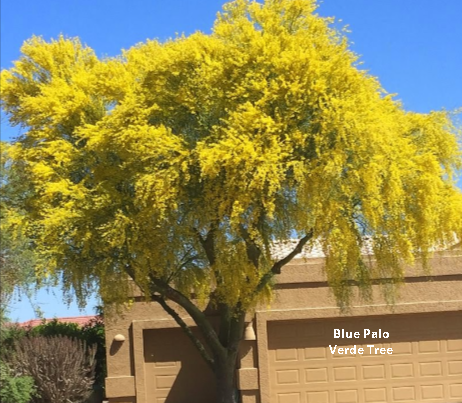
Blue Palo Verde Tree - A moderate to fast grower. It is a prolific bloomer for several weeks in the spring with long yellow flowers. Mature size is 25 feet tall. It needs full sun. Water weekly in summertime, monthly the rest of the year. Bees, birds, and wildlife love the seeds, nectar, and shade. Prune only in warm weather, and guide the branches to develop a canopy. Flowers and edible seed pods will drop, requiring blowing, so don't plant near a pool.
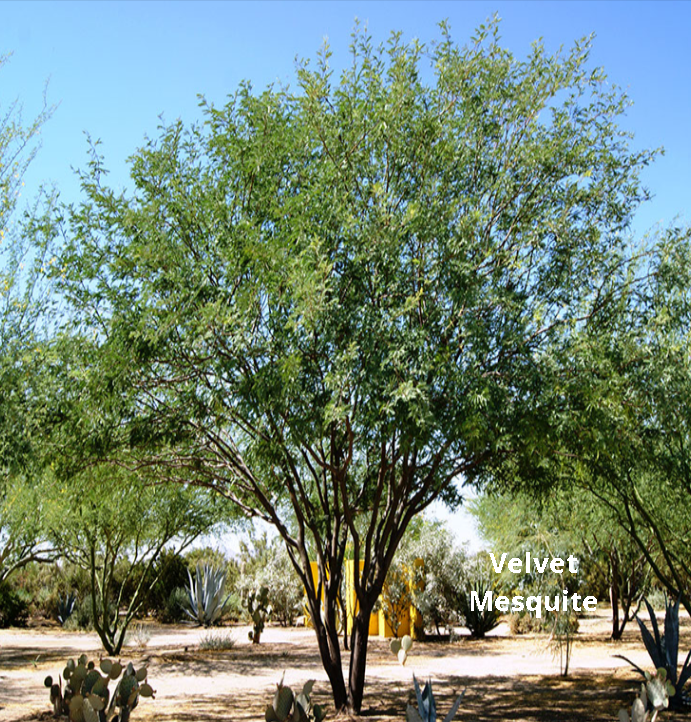
Cacti Galore
Arizona is known for our cacti, so why not celebrate that by highlighting the more decorative and gorgeous varieties we have, all the while maintaining a beautiful, yet carefree lawn that is the envy of your neighbors.
If you choose to ordain your lawn or landscape with cacti, I would recommend choosing the smaller ones listed below, as opposed to the traditional large Saguaros or Chollas, to maintain the growth better, and to be able to enjoy the blooms sooner.
Small Cacti
1. Echinocereus, aka Hedgehog: there are over 70 varieties, but one unique to Arizona is the Arizona Rainbow Cactus. They generally stay under 18 inches, and grow slow. These have large, lovely blooms that open mostly in the summer.
2. Parry's Agave or Mescal (Agave Parryi) - this gorgeous succulent is a perennial that rarely blooms, and doesn't like shade very much. It grows to about 2-3 feet, and can tolerate AZ "winters" well.
3. Arizona Barrel Cactus (Ferocactus Wizlizeni) - so simple and elegant. These grow slowly over 50 years. Flowers bloom in summertime that look like pineapples. Most of these stop at a 4 foot height, with a width of 2.5 feet. This cactus prefers gravel around it.
4. Topsy Turvy succulent Echeveria Runyonii - this unusual looking succulent cacti is minus any pricklies or needles. It grows fairly fast, and to no more than 1 foot tall. It does have yellow or orange blooms in the summer/fall that attract hummingbirds, bees and butterflies. This cacti is very well suited for containers.
5. Santa Cruz Beehive Cactus ( Coryphantha Recurvata) - this tiny little gem stays small (only 6 inches across), and reproduces easily as it ages. It blooms in mid summer. It has multiple dense spines all over. It loves full sun but tolerates light shade.
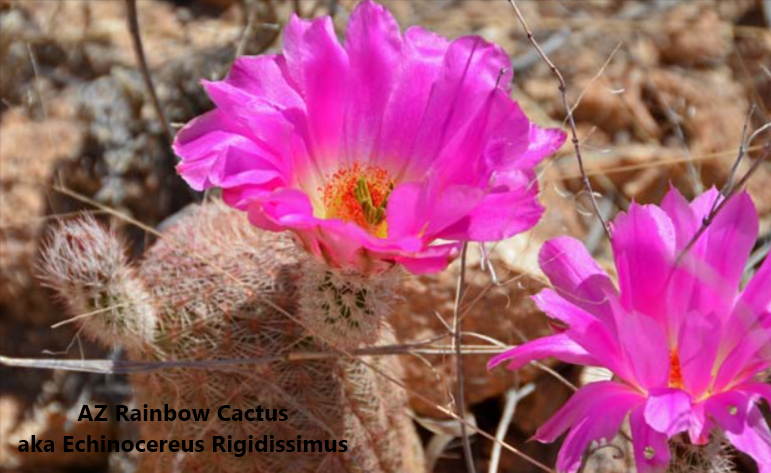
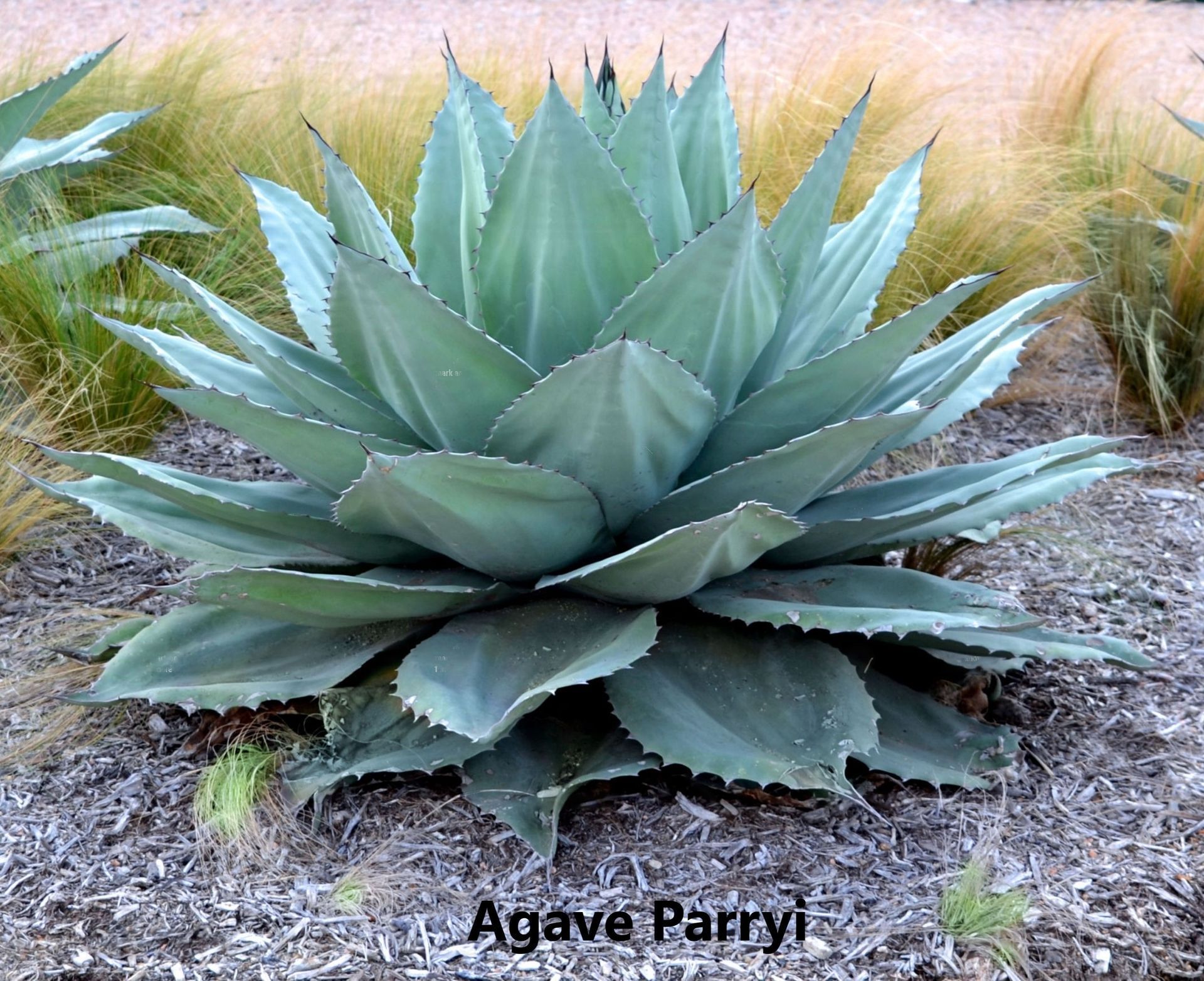
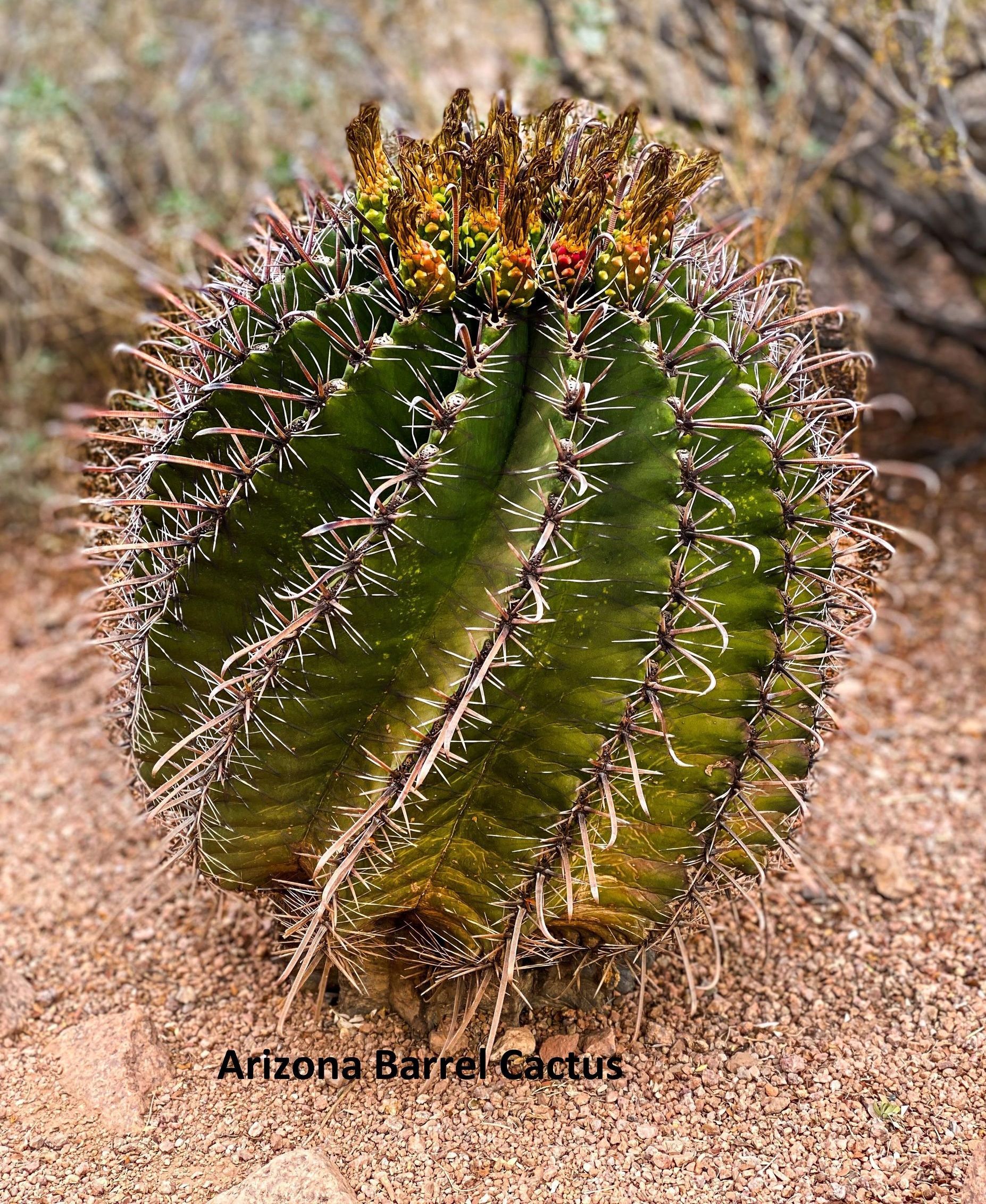
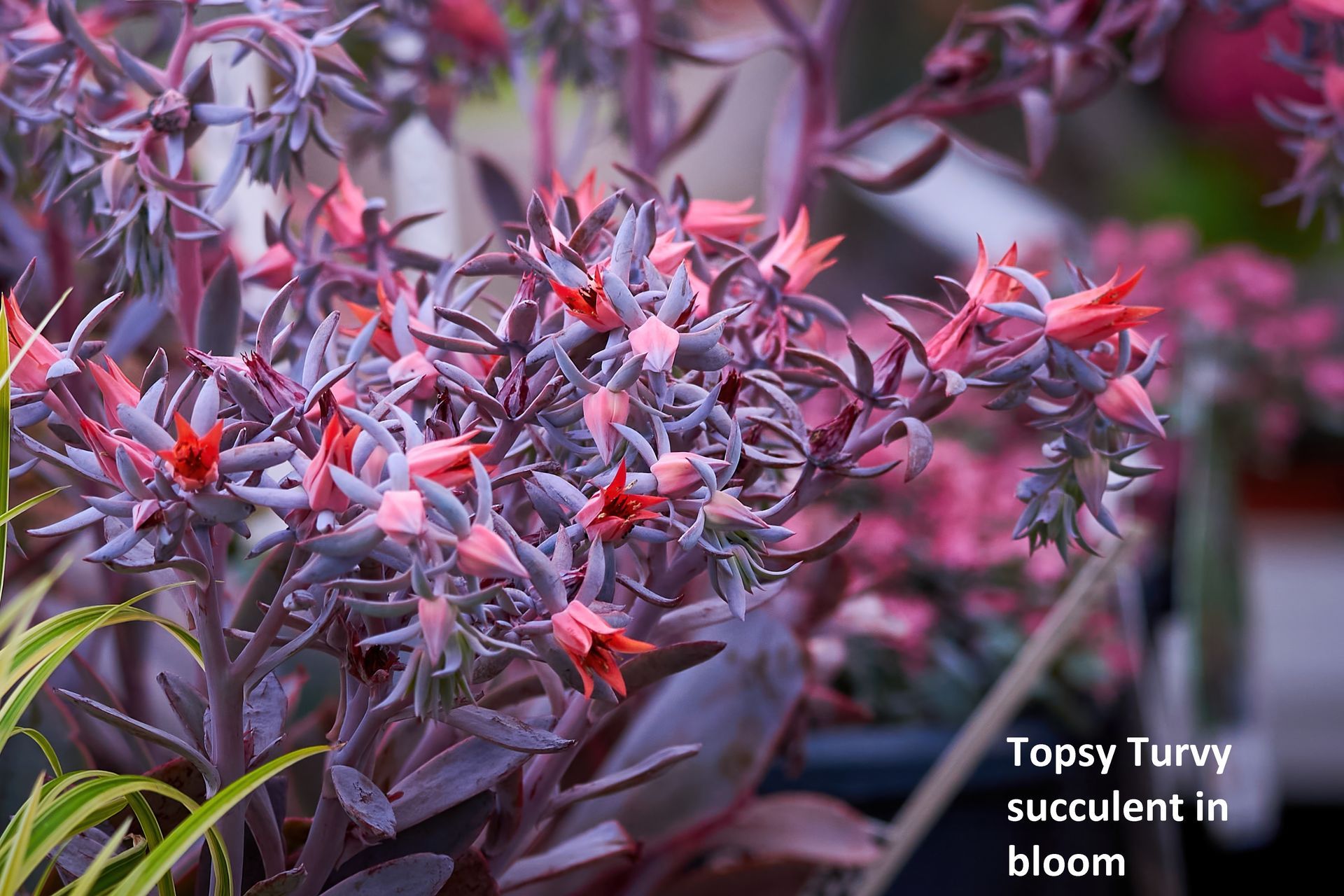
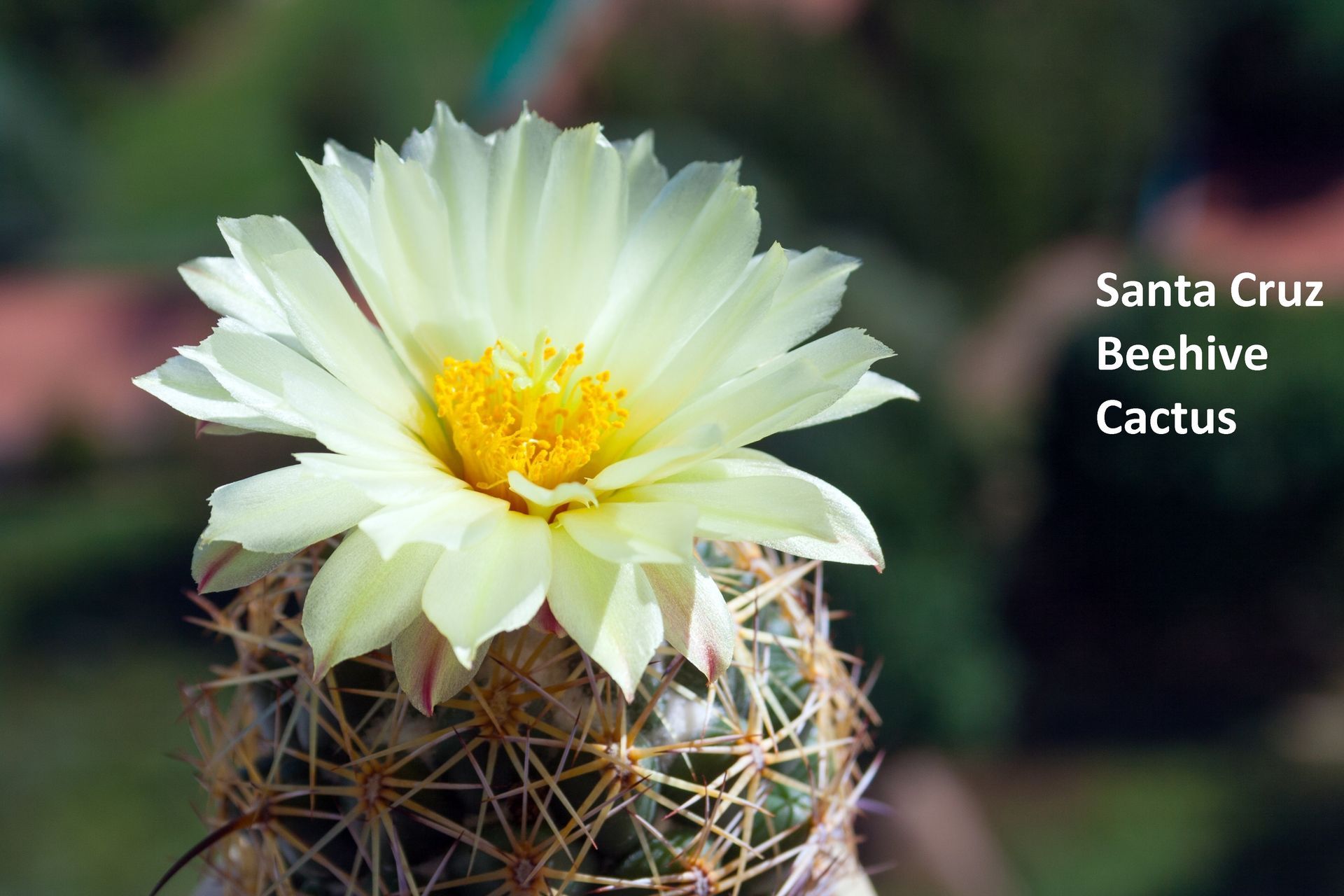
Most cacti don't bloom in the first few years of growth, some even take 30 years! Blooming cacti aren't exactly the most common due to the fact that a variety of factors determine blooming (heat, light, watering).
If your cactus are the blooming type, chances are they will be showing their beauty maybe in April, but most likely in late May through August. Once the July heat sets in, the blooms may be gone till next year. Mid morning is the best time to view the blooms, as they will be fully opened by then.
Care for Cactus in Phoenix area
Watering outside cacti: about 1-2 times a month. Yup, that's it. Don't water log it! Don't water the top of the plant; water the soil (always avoid soggy soil with cacti).
Sun vs shade: depends on the species, but most do fine with full sun, but at least 6 hours of sun. In the extremely hot months, they may sunburn, so 1/2 day of shade is appropriate until fall arrives. Too much shade decreases flowering.
Pots or the ground: cacti do very well in pots because they usually drain better than regular dirt. Drainage is important hint, hint. If your cacti are in the ground, mix the soil with pumice, perlite, or crushed/pea gravel to facilitate drainage. Or, buy a cactus potting mix, which is usually sandy, to help with drainage.
Fertilizer: slow release mild fertilizer 1-2 times a year
Repotting: every 2-3 years, preferably in the spring..
Great places to see cacti & learn more about growing them:
Desert Botanical Garden (east Phoenix), Phoenix Desert Nursery (south Phoenix), Old West Cactus Farm (north Phoenix), Matt's Cactus Farm (north east Phoenix), Cox Cactus Farms (north Phoenix), (Saguaro National Park (Tucson), Arizona Sonora Desert Museum (Tucson), Catalina State Park (north of Tucson).
Laveen, AZ 85339, United States of America

OPENING HOURS
- Mon - Fri
- -
- Saturday
- -
- Sunday
- Closed
